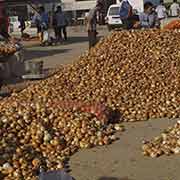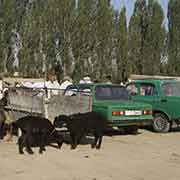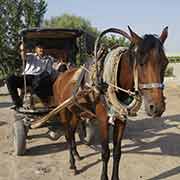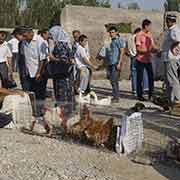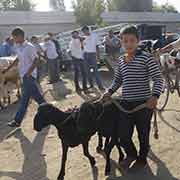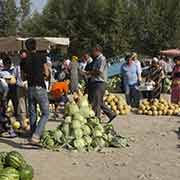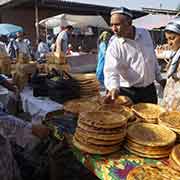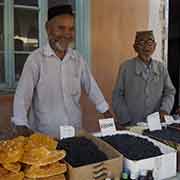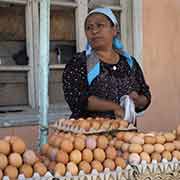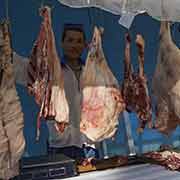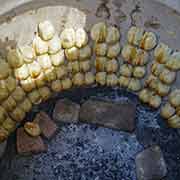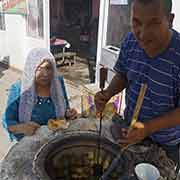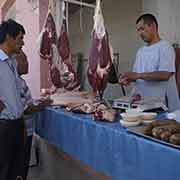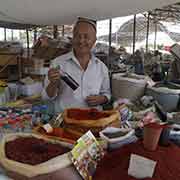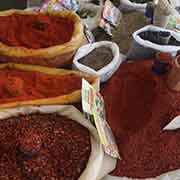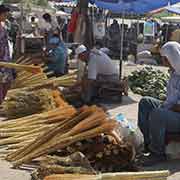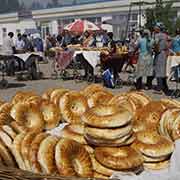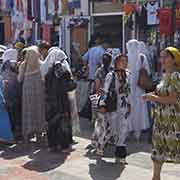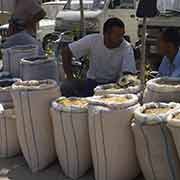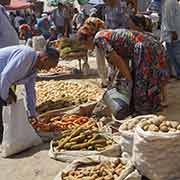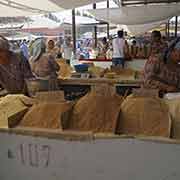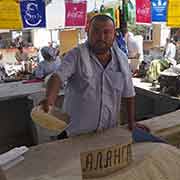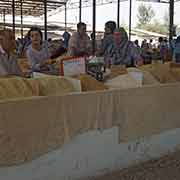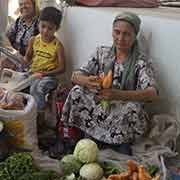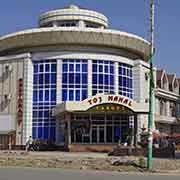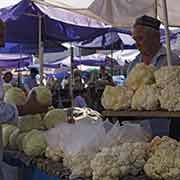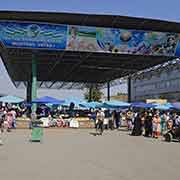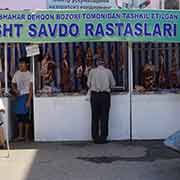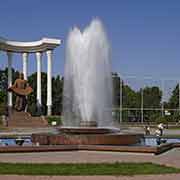Photos of Margilan and Fergana, southern Fergana Valley, Uzbekistan
Margilan and Fergana, southern Fergana Valley
Margilan (Marg‘ilon in Uzbek) was, accordong to European legend, founded by Alexander the Great. Wether true or not, it was an important stop on the Silk Road by the 9th century CE, along the route going across the Alay Mountains to Kashgar in Xinjiang. It remained an important place for Central Asian commerce, and its merchants were said to be a law unto themselves during Soviet days, when Margilan was the heart of Uzbekistan’s black market. And also today commerce is important: on Thursday and Sunday there is the Kumtepa (Qumtepa) Bazaar, about 5 kilometres west of the centre of town, a wonderful sight with the mean wearing traditional skull caps and the women in locally produced khanatlas dresses and head scarves; Margilan, with almost 200,000 inhabitants, is a stronghold for conservative Islam.
you may then send it as a postcard if you wish.
Margilan is also the home of the Yodgorlik (Souvenir) Silk Factory, where everything is still done the traditional way; it employs over 2,000 workers and produces premium silk cloth. The Margilan Silk Factory next door employs 15,000 people and here modern machinery is used. There has been silk production here since ancient times.
Fergana (Fargʻona in Uzbek), or Ferghana, is the capital of Fergana Region in eastern Uzbekistan, about 420 km east of Tashkent and about 75 km west of Andijan. It has about 227,000 inhabitants, mainly Tajiks and Uzbeks, with about 25% Russian speakers as well. While the area has been populated for thousands of years, the modern city was only founded in 1876 as a garrison town and colonial appendage to Margilan, about 18 kilometres to the north. Initially named New Margilan, then in 1907 renamed Skobelev after the first Russian military governor of Fergana Valley, it became Fergana in 1924, after the Bolshevik reconquest of the region from basmachi rebels, and named for the province of which it was the centre. The region first oil refinery was built here in 1908 and more have been added, making Fergana one of the most important centres of oil refining in Uzbekistan.



